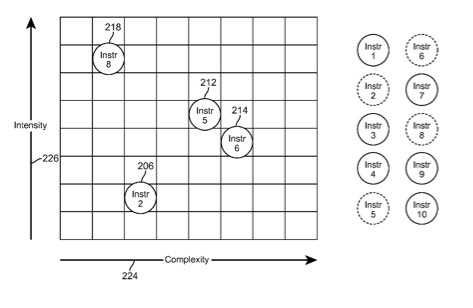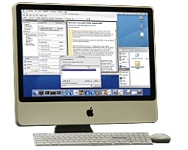Apple has been granted a patent (number 2012006068) by the US Patent & Trademark Office for a graphical user interface for music sequence programming.
Here’s Apple’s background and summary of the invention: “If a Digital Audio Workstation (DAW) user desires to create a musical pattern such as a complex drum pattern they can utilize MIDI programming and/or arranging audio loops. However, utilizing MIDI programming and/or arranging audio loops requires in-depth expertise in MIDI and audio editing, as well as some musical background including knowledge of complex rhythms to achieve musically pleasing results where all elements of a sequence fit together.
“Therefore users, particularly novice users, can benefit from a method and system for presenting a graphical user interface that allow a user to quickly program a musical sequence without music sequence programming expertise where all elements of the sequence fit together musically. Furthermore, experienced sequence programmers can benefit from a quick and efficient workflow for creating music sequences.
“Disclosed are systems, methods, and non-transitory computer-readable storage media for presenting a graphical user interface that allows a user to arrange icons within a grid to program musical sequences.
“An example graphical programming interface system includes a processor. A grid matrix defined by a plurality of coordinate axes, having selectable matrix positions is displayed on a display device. Multiple movable object icons, each representing an object having a predefined output sound are also displayed on the display device. In one aspect, a single object data file is associated with each matrix position on the grid matrix.
“In this aspect, once a user places an object icon on a matrix position, the processor causes the predefined output sound associated with the object icon in accordance with the object data file associated with the matrix position at which the object icon is placed, and outputs the processed sound to an output device. This allows a user to program musical sequences by placing one or more object icons each on the selectable matrix positions.
“In a further aspect, a plurality of object data files is associated with each matrix position. In this aspect, each of the plurality of object data files associated with each matrix position is associated with an icon. In this aspect, once a user places an object icon on a matrix position, the processor causes the predefined output sound associated with the object icon in accordance with the object data file associated with the matrix position and the object icon, and outputs the processed sound to an output device
“The plurality of object data files are organized or classified, such that different positions along a coordinate axis correspond to different characteristics of the object data files. The object data files are stored in a memory device.
“In one aspect, the object data files are MIDI patterns or audio loop patterns. In another aspect, each object icon represents a component of a drum kit. In another aspect, a characteristic of the object data file is a rhythmic pattern of the object data file. In another aspect, the rhythmic pattern increases in complexity along a direction of a first coordinate axis of the grid matrix. In another aspect, a characteristic of the object data file for each object is intensity of notes in the object data file. In another aspect, the intensity of the object data file increases along a direction of a second coordinate axis of the grid matrix. In another aspect, the plurality of object data files are soundwave files.”
The inventors are Gerhard Lengeling and Jan-Hinnerk Helms.




